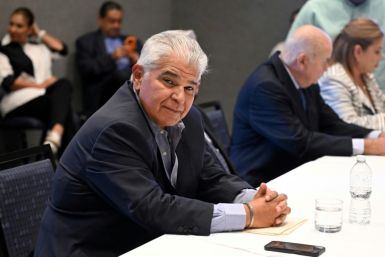China: Exports, Imports Slow, As Does Inflation, But A Rate Cut Looms
We can expect China to move more quickly in changing monetary and fiscal policy next year after a flood of weak economic data for November over the weekend, and a well-timed rare statement from the country's senior policy making group on economic policy in the coming year.
So watch for cut in interest rates in the next couple of weeks, possibly around Christmas Day (China lifted rates on Christmas Day a year ago).
In fact November was a very weak month for the Chinese economy: inflation fell, export growth slowed again, industrial production also fell again and the Shanghai market was at its lowest since March 2009.
The data confirmed the readings from the two manufacturing surveys on December 1 that the country's huge industrial base was experiencing a sharper than expected contraction.
The so-called 'flash' estimate for Chinese manufacturing for December will be issued later this week by HSBC and is expected to confirm the contraction seen last month.
With Europe slowing sharply and despite more signs of a growing rebound in the US, China's exporters are facing a tough outlook for the early months of 2012.
Growth in Chinese exports and imports slowed in November, further evidence of the faltering demand abroad and at home that is pushing the country's leadership towards a more explicit pro-growth policy.
Exports rose at a 13.8% annual rate in November, the lowest for nine months, but it was the most sluggish performance since November 2009 when the traditionally volatile month of February (Lunar New Year) is ignored.
Imports increased 22.1% in the year to November, weaker than a rise of 28.7% in October, but stronger than September's 20.9%.
The surplus was $US14.5 billion, down from from October's $US17.0 billion, but the same level as in September, but under the $US22.9 billion in November of 2010.
The trade figures underlined the belief that China's slowdown continues, especially after other figures out over the weekend showed a serious risk of a sharp industrial slowdown -- but inflation fell sharply to an annual rate of 4.2% in November, the lowest for some while.
No wonder the country's highest body, the Politburo, left a big hint at the weekend in a rare statement that rate cuts possibly, and other measures to ease the tough monetary policy stance of the past year or more, would be changed.
"China will maintain its prudent monetary policy and proactive fiscal policy next year, but fine-tune these policies as conditions change," the Political Bureau of the Communist Party of China (CPC) Central Committee announced on Friday.
"At the meeting chaired by President Hu Jintao, who is also general secretary of the CPC Central Committee, it was agreed that the country will make its policy responses more targeted, flexible and forward-looking next year.
"The country also pledges to maintain control over the intensity, pace and focus of macroeconomic regulation and preset or fine tune policies in light of changes in economic development, according to a statement issued after the meeting."
The central bank surprised the market on November 30 with an earlier-than-expected cut in banks' required reserves, the first such move in three years. That came hours before the six major central banks moved to boost US dollar liquidity in Europe to try and stave off a growing credit freeze.
In the first eleven months, China's bilateral trade with EU amounted to $US517.11 billion, up 19.2% on a year earlier, a sharp slowdown from the near 32% jump in the first 11 months of 2010.
In November, Chinese exports to Europe slowed, rising just 5%, against 20% in the same month of last year.
Exports to German fell 1.6% last month and shipments to Italy fell 23%, the third monthly decline in a row.
China's annual trade surplus has fallen from a high of almost $US300 billion in 2008 and could hit a low of just over $US150 billion this year, according to the government.
China's economic growth has been slowing all year. GDP growth slowed to 9.1% in the third quarter from 9.7% in the first quarter.
The consumer price index fell to 4.2% in November from this year's peak of 6.5% in July.
That was the slowest pace of growth since last September when it rose 3.6%.
However, even with the sharp fall in November, the country's CPI rose 5.5% year-on-year in January - November, still above the government's full-year target of 4%.
Non food inflation fell back to just 2.2% (from 2.7%).
On a monthly basis, the cost of living dipped 0.2% in November from October.
Food prices, which account for nearly one-third of the basket of goods used to calculate the CPI, rose an annual 8.8% in November, down sharply from earlier in the year. But they still contributed 2.7% or more than half the 4.2% annual rate in the month.
Producer prices fell to an annual rate of 2.7% in the month from more than 5% in October, a sharp fall and one that underlines the slowing pace of activity in the economy.
On a month-on-month basis, China's PPI fell 0.7 % from October.
Producer purchase prices grew 5.1% in the year to November, a fall of 0.7% from the annual rate in ten months to October, another sign of the impact of the slowing economy and lower food prices.
With those manufacturing surveys showing a contraction in activity, it is no surprise that industrial production slowed to an annual rate of 12.4% in November, down 0.8% from the rate in October.
On a monthly basis, the industrial value-added output increased by 0.9%, the government said.
In the first 11 months of 2011, the industrial value-added output increased 14% year-on-year, down 0.1 percentage points from the rate in the first 10 months.
Copyright Australasian Investment Review.
AIR publishes a weekly magazine. Subscriptions are free at www.aireview.com.au






